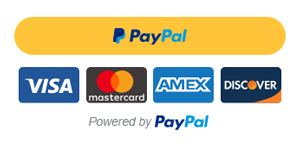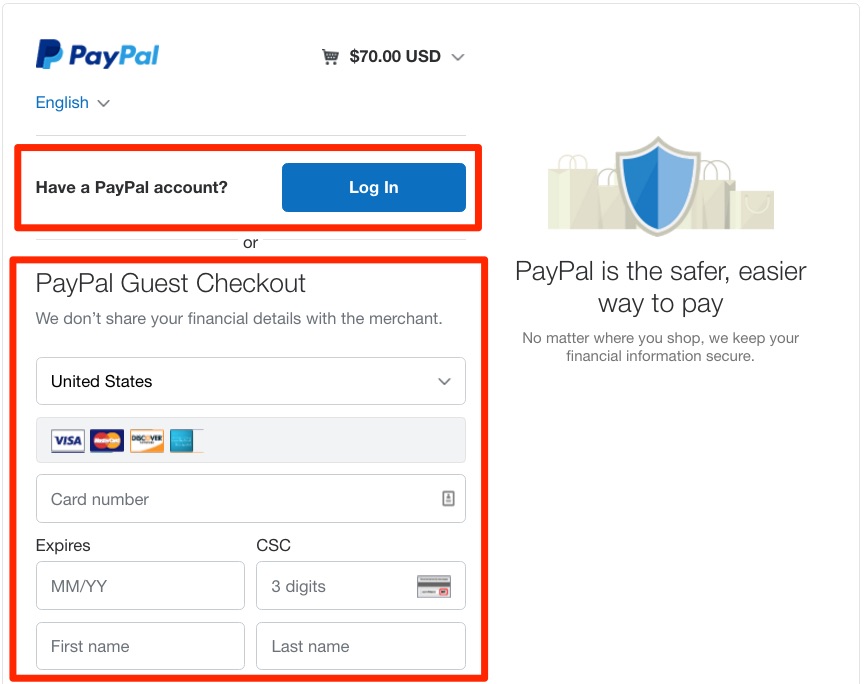You start setting up your PayPal profile during the process of registering for a PayPal account. Open up your browser and type www.paypal.com into the Address Bar. The PayPal home page has multiple links that let you sign up for your free account. You can find one Sign Up link in the upper-right corner of the screen, and the other can be found in the middle of the screen.
- PayPal is an online payment system that allows you to receive donations and other payments through websites and email accounts. There are special considerations for non-profit organizations, although anyone can sign up for a PayPal account and get the code for a 'Donation' button to insert on a web page.
- Payment Data Transfer (PDT) is a notification service that, once activated, can send transaction-related information immediately to merchants who are using PayPal payment buttons (PayPal Payments Standard). Merchants can display these transaction details on their website to confirm the buyer's payment was successful.
- Hi Vacicmila, To answer your query as raised, you need to have a multi currency PayPal account set up - process of setting it up is described in the above article. In other words, you need to add foreign currencies as the accepted ones on your PayPal account, then you will be getting a payment in the currencies other than your domestic one.
PayPal will place the logo on your payment page. The logo you use must be sized at 150 x 50 pixels or PayPal won’t accept it. Checkout landing page: If you want your customers to land on a specific page after they’ve purchased an item — setting up a thank-you page on your website is a nice idea, for example — enter that URL here. Integrating a PayPal shopping cart with your website using the PayPal application programming interface (API) Accepting payments offline or off-site to process later using PayPal's Virtual Terminal When you're signed in to PayPal, click the 'merchant services' tab to see all the options available to you as a seller.
Opening a Personal account
You can open a Personal account in just a few steps; the entire process doesn’t usually take more than five minutes. Here’s how:
1. At the PayPal Account Sign Up page, make sure the Personal Account option is selected.
If you’re wondering what happened to the Premier account, just hang on. You have the option of upgrading a Personal account to a Premier account later on.
2. Select your country from the list and click the Continue button.
3. Start building a PayPal profile by filling in the fields shown on the Account Sign Up page.
The information you need to give PayPal includes
• Your first name, last name, and full address, including city, state, zip code, and country. PayPal requires a zip code for U.S. accounts, but may not require one if you create an International PayPal account.
• Your home telephone number for verification purposes; you have the option of entering a work number.
• Your e-mail address. You need to enter this twice so PayPal can ensure you didn’t mistype it the first time.

• A password to use with your PayPal account.
• This password must be at least eight characters long and is case-sensitive. (This means you need to pay attention to whether you use uppercase and/or lowercase characters when you create your password. PayPal won’t accept PASSWORD123 as a valid password if you typed password123 as your password when you created your account.) Just as you did when you entered your e-mail address, you need to type your password a second time. Picking a password that you don’t use with other accounts you may have is also important. If you pick your e-mail password to use as your PayPal password and your e-mail password is compromised, you may find someone making unauthorized use of your funds! It’s better to be safe and think up a unique password.
• You are asked to pick two questions from a list of four security questions. The answers you give to these questions are used to verify your identity if you lose or forget your password.
• Deciding whether you want to open a Personal or Premier account. The big advantage of having a Premier account is that you can accept credit card payments from people who don’t have or use a PayPal account.
• You need to read and accept the PayPal User Agreement and Privacy Policy, or you won’t be able to open your account. It’s vital that you read both documents before checking the Yes option, indicating that you agree to the terms. Knowing what can or may happen to your account is important before transferring your money into the account.
• PayPal also asks you to indicate that you understand your rights with regard to the arbitration of claims as outlined in the Legal Disputes section of the User Agreement. A link is provided to the document, which describes how legal disputes should be handled in the event that there are problems between you and PayPal. As with any legal document, you should read the whole thing before signing and contact a lawyer if you’re unsure as to what the document means.
• You have one final security step to go through before the account opens. PayPal displays a sequence of characters in a box with a boxed background. You must type in the characters, exactly as shown, in a text box to the right of the sequence. This step is to prevent automated programs from trying to sign up for PayPal accounts. Although a program can fill out the fields on the Account Sign Up page, it can’t read the sequence and type it into the box.
• If you are visually impaired, you can still type the correct character sequence into the box, even if you can’t read the characters as shown against the background. Click the Help link displayed at the end of the “Security Measure” paragraph to open the PayPal Registration Security Help page. At the end of the page is a listen to the security characters link. Click the link to hear an audio clip that says the characters aloud. You can then type the characters into the box correctly to finish the registration process. In the case of these security characters, it doesn’t matter whether you type in the letters as uppercase or lowercase, as long as you get the letters and numbers in the correct sequence.
4. Click the Sign Up link at the bottom of the page to submit your registration information.
After filling out the registration form, you’re taken to a page that tells you the process is almost complete except for the confirmation of your e-mail address. After you click the Sign Up link from the previous screen, PayPal sends you an e-mail.
5. Open your e-mail program and look for an e-mail from PayPal.

If your e-mail inbox is anything like mine, you have to search hard to find the PayPal e-mail amidst all the spam. Look for an e-mail from service@paypal.com with a subject heading of “Activate Your PayPal Account!”
6. Click the Click here to activate your account link, which can be found in the body of the e-mail. (Alternatively, you can copy the link and paste it into the address bar of your browser.)
Clicking the link takes you to a page where you are prompted to enter the password you designated when you registered for the account.
7. Type your password and click the Confirm button.
Congratulations! You just opened your PayPal account.
Updating your profile
After you open a PayPal account, keeping your user profile up-to-date is very important. To update your profile, log on to your account and click the Profile link under the My Account tab. You have the option of updating any of the following:
Paypal Buttonset Up Payments Via Paypal On Your Site Account
- Account Information: You can update your basic contact information (e-mail, address, password, time zone, and so on).
- Financial Information: You can change the credit cards or bank accounts associated with your PayPal account, set up online bill paying, see your account balances, redeem gift certificates, and more. The options that are available are dependent upon the type of account that you have.
Paypal Buttonset Up Payments Via Paypal On Your Site Website
- Selling Preferences: Here you can set up preferences for setting up auctions, registering your Web site as a PayPal shop, setting shipping preferences, setting up invoice templates, and so on. The options available depend upon the type of PayPal account you have.
